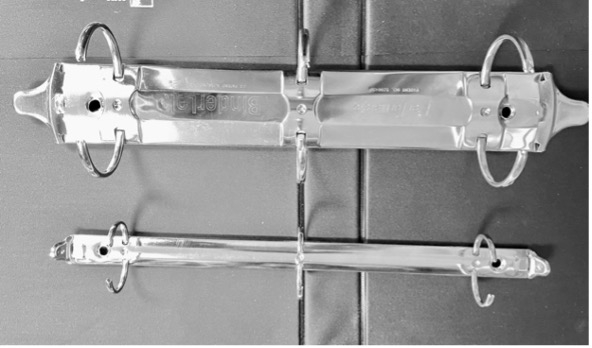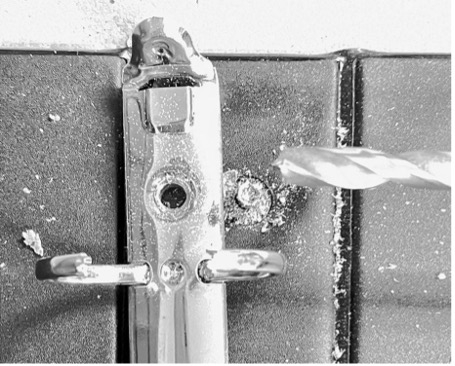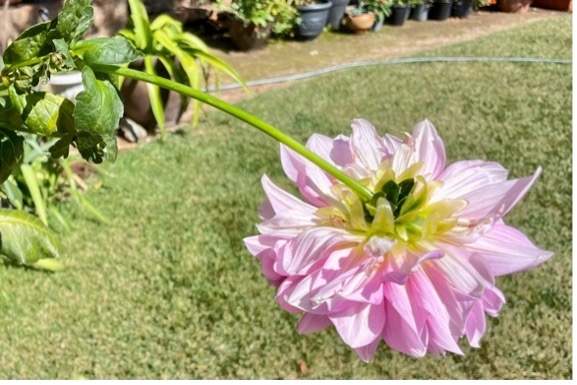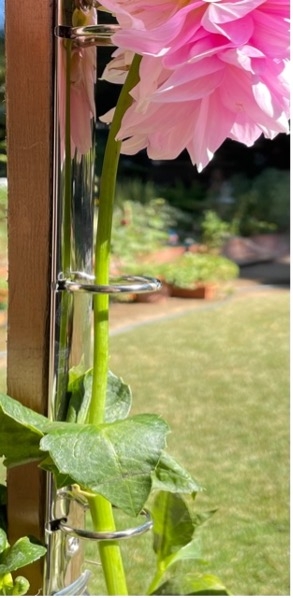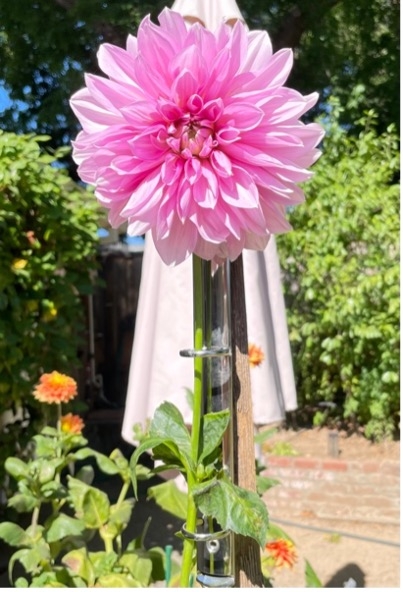Bringing Nature Home: How You Can Sustain Wildlife with Native Plants was first published in 2007 and set off an enthusiasm for native plant gardening. This practice is now known as “rewilding” in horticulture circles.
Author Doug Tallamy is an entomology professor at the University of Delaware. Entomology is the study of insects, and one might wonder what insects have to do with native plants. Tallamy tells us: Insects eat plants (and don't we gardeners know it), and native insects eat native plants.
These insects support other animal life, including native birds, amphibians and animals. We should appreciate insects more as they support animals we love.
Tallamy also devotes some attention to insects as a source of dietary protein. In some quarters, they are already valued as food. In the future, that role could grow. Although this discussion might make some readers queasy, consider that the first person to eat a crab or a lobster must have been very courageous.
Tallamy's interest in the environment originated when he was a child. His family had moved into a new house next door to some fields, where Tallamy found a pond full of baby toads. Soon enough, a bulldozer came along to prepare the land for another house, and poor Doug escaped with only a handful of toadlets.
Unfortunately, they could not survive outside of their natural environment. This experience helped shape his belief that suburban development is now the greatest threat to biodiversity.
There is a solution. Abandon the sterile, fertilizer-and-insecticide-laden front lawn, and plant natives that will attract other natives. Tallamy also advises us to avoid exotic species that can escape the yard and colonize open spaces, such as parks and wildlands.
He gives several examples of this phenomenon, illustrated with photographs. One image is of a Japanese honeysuckle efficiently strangling an oak tree in a forest. This photo made me rush outside and peer anxiously at my honeysuckle, which is confined to a collapsing trellis and hasn't gone rogue.
We have several examples of invasive exotic plants in Napa. The French broom at Westwood Hills Park is a scourge. A stand of bamboo next to my neighbor's house is terrifyingly vigorous, and I see pampas grass everywhere in the county. These plants were imported, mostly to complement midcentury modern architecture, and because they had no predators here, they thrived.
Many of Tallamy's examples are drawn from the eastern U.S. because that is where much of this research is done. However, he provides a list of native plants suitable for the western U.S. in an appendix.
Tallamy also discusses what it means to be a native plant. Of course, all plants originate someplace, but by Tallamy's definition, a native plant is one that interacts with and is shaped by its community of insects, birds and other creatures. The plant may have originated somewhere else, but over time it helps create an ecosystem that resembles its place of origin.
Tallamy's studies have led him to recognize the interrelatedness of all living creatures. Biodiversity makes everything in the ecosystem more resistant to disease and makes it possible to create more biomass, or life. Even from the most hard-boiled human viewpoint, that is a good thing. Who doesn't want more fish in our rivers and seas?
Bringing Nature Home is not a diatribe. Tallamy doesn't harangue the reader; rather, he calmly explains how a change in attitude about gardening can benefit the environment. Using fewer agricultural chemicals and less water saves money, too.
In the chapter titled “Blending in with the Neighbors,” Tallamy recounts the story of a discussion with his neighbor. Their conversation is a master class in how to educate someone without sounding like a pompous know-it-all.
He also suggests leading by example. Create a native-plant garden so beautiful that everyone will approve. Then make the planted area bigger and denser, which means less lawn.
Tallamy believes it's not hard to persuade people to go native because most homeowners don't know one plant from another. Also, most people enjoy nature and are interested in wildlife. In fact, it was the encounter with his neighbor that convinced Tallamy to write this book
My 2009 edition of Bringing Nature Home (Timber Press) is lavishly illustrated. Half the book is color photographs, which are inspiring as well as instructive. This book would be a fine present for any gardener, or for anyone who has an interest in the environment. Tallamy is a scientist, but he writes in an accessible, conversational manner and is a pleasure to read.
Library Talk: Join UC Master Gardeners of Napa County for a Napa Library talk on “Growing Peppers” on Thursday, January 2, from 7 pm to 8 pm via Zoom. Let's parlez peppers—hot, sweet and mild. Learn the basics of starting peppers from seed, plus growing tips and usage ideas for your eventual harvest. Click here to register!
Rose Pruning Workshop: Join UC Master Gardeners of Napa County for a workshop on “Winter Rose Care” on Saturday, January 11, from 10 a.m. to noon, via Zoom. Learn pruning techniques for all types of roses along with everything you need to know to make your roses a success in 2025. Attendees will be invited to a hands-on pruning workshop at Fuller Park Rose Garden on January 18 to practice what they learned. Register here.
Help Desk: The Master Gardener Help Desk is available to answer your garden questions on Mondays and Fridays from 10 am until 1 pm at the University of California Cooperative Extension Office, 1710 Soscol Avenue, Suite 4, Napa. Or send your questions to mastergardeners@countyofnapa.org. Include your name, address, phone number and a brief description

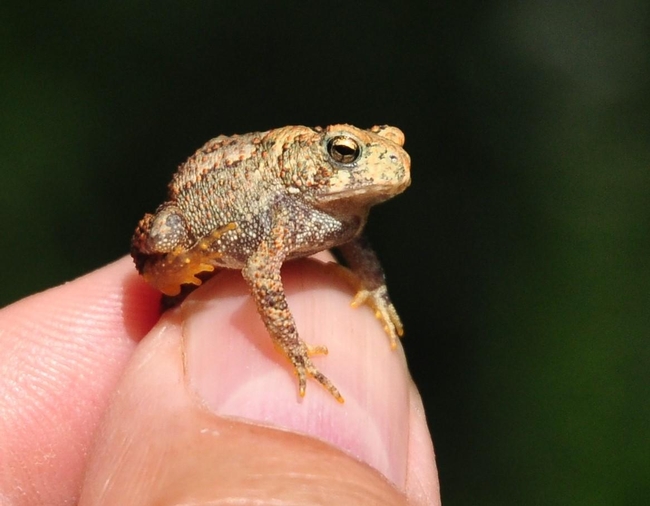
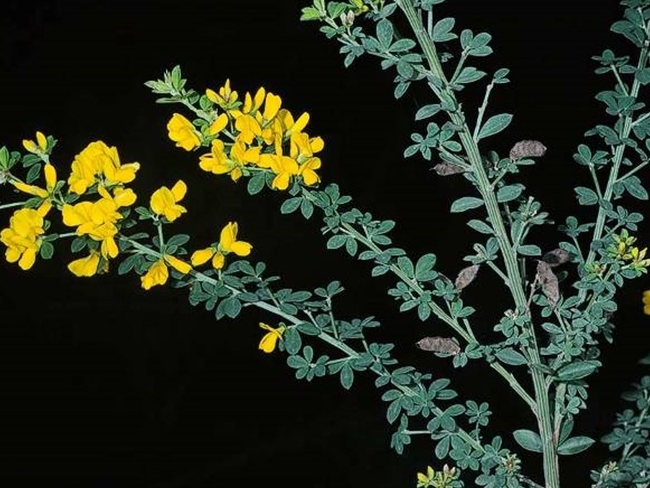
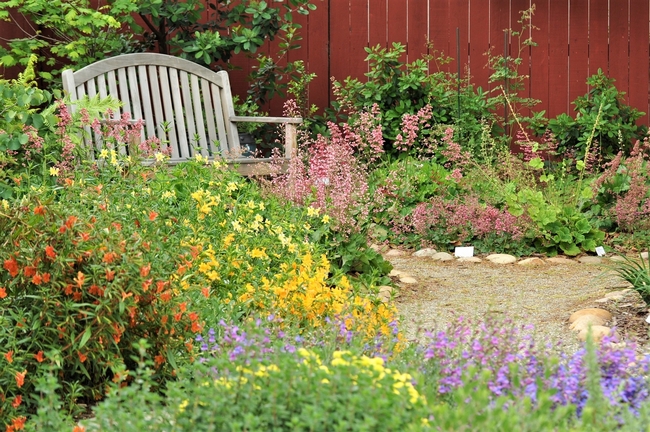
Hey, everybody, it is deadhead time at the Rose Corral. No, I am not talking about a gathering of slow-thinking people. Nor am I talking about followers of a famous rock group, or about delivery trucks that travel without any cargo. I am talking roses—specifically, roses that are getting tired and trying to go to seed.
By December most of our rose bushes are fading. They are producing fewer blossoms and dropping yellow, brown or black leaves. It is time to clean up the garden as we close it down for the winter.
As brief as winter may be in Napa Valley, we still need to prune back the roses. For most of the year, we are merely deadheading, which means removing the spent blossoms to keep the bushes flowering. But now we need to prune the canes and stems much harder to prepare them for winter.
Napa Valley is in USDA Hardiness Zones 9a and 9b. That means we seldom have hard freezes. That is nice for us, but our rose bushes think they should keep on blooming. Although they can do that and look pretty good if we leave them alone, the bushes will not store enough energy in their roots for spring growth.
By pruning the bushes back to two to three feet, we can encourage the behavior we want. Pruning allows the bush to store energy in its roots rather than spending it on new blooms.
Even gardeners don't always fully appreciate that all living things go through a life cycle. If roses aren't deadheaded, the spent blossoms grow seed pods known as rose hips (photo 1). If the hips are pollinated and drop to the ground, they can potentially produce a copy of the parent bush, a process that happens in the wild. Photo 2 shows two swollen hips split open, revealing seeds. Alternatively, the seeds might get eaten by birds before they have a chance to drop and sprout.
In controlled environments like our Napa Valley gardens (I use the term “controlled” loosely), we generally like to keep rose blooms on the bush. To keep the blooms coming, we deliberately stop the life cycle by removing the tired blooms—deadheading—before the seed pod develops. We use small hand shears to do the job.
In cold parts of the country, rose bushes go dormant in winter. But given our mild winters, we need to help matters along. The Master Gardeners who manage the rose garden in Napa's Fuller Park follow an aggressive pruning protocol in January, reducing bushes by as much as two-thirds. For most of the bushes, that means a final pruned height of two to three feet.
In essence, we are forcing winter dormancy with this hard pruning. The good news is that our tough approach leads to plentiful blooms by May.
For winter pruning you need either a hand saw or sharp loppers that can cut cleanly through canes that may be an inch or more in diameter (photo 3). The pruning process also involves removing any remaining leaves on the canes and stems by hand.
If you would like more guidance on winter rose care, plan now to attend the online course offered by Napa County Master Gardeners on January 11. The online course will be followed by a hands-on class at Fuller Park the following week. See registration details below.
Remember to toss rose leaves and pruning debris into your city compost bin and not your own compost pile. The municipal compost reaches temperatures high enough to destroy any bacteria or fungal spores; a backyard pile typically won't get that hot.
Napa County Master Gardeners are usually working in the Fuller Park rose garden on the first Sunday and third Thursday of each month between 10:00 a.m. and noon, weather permitting, February through November. We hope to see you there.
Library Talk: Join UC Master Gardeners of Napa County for a Napa Library talk on “Growing Peppers” on Thursday, January 2, from 7 pm to 8 pm via Zoom. Let's parlez peppers—hot, sweet and mild. Learn the basics of starting peppers from seed, plus growing tips and usage ideas for your eventual harvest. Click here to register!
Rose Pruning Workshop: Join UC Master Gardeners of Napa County for a workshop on “Winter Rose Care” on Saturday, January 11, from 10 a.m. to noon, via Zoom. Learn pruning techniques for all types of roses along with everything you need to know to make your roses a success in 2025. Attendees will be invited to a hands-on pruning workshop at Fuller Park Rose Garden on January 18 to practice what they learned. Register here.
Help Desk: The Master Gardener Help Desk is available to answer your garden questions on Mondays and Fridays from 10 am until 1 pm at the University of California Cooperative Extension Office, 1710 Soscol Avenue, Suite 4, Napa. Or send your questions to mastergardeners@countyofnapa.org. Include your name, address, phone number and a brief description
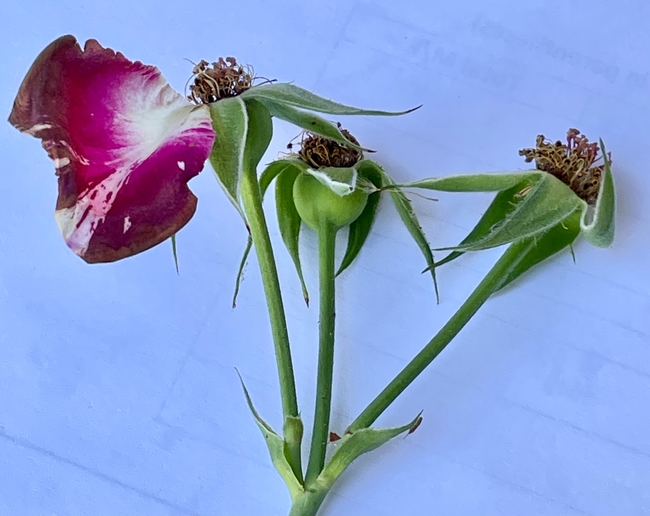
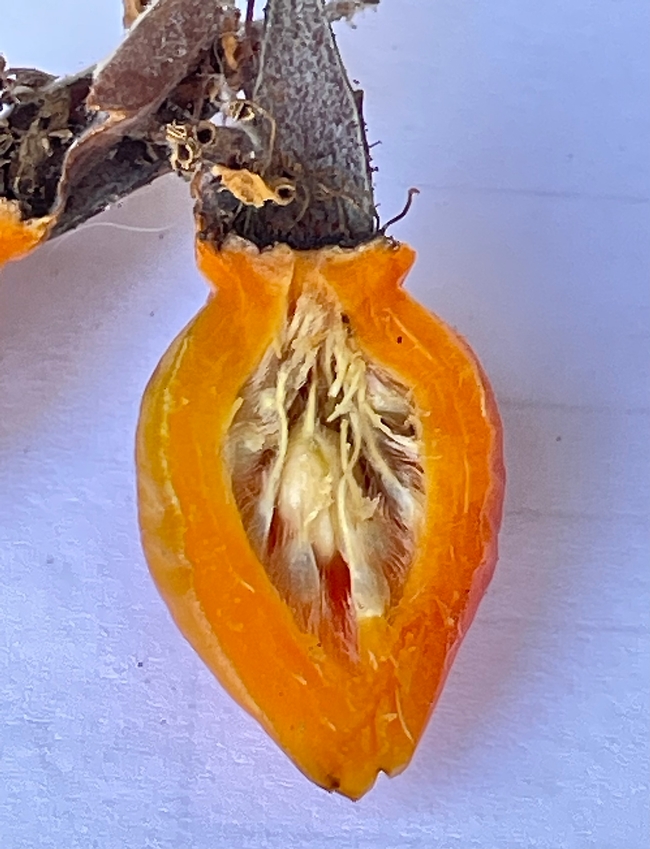
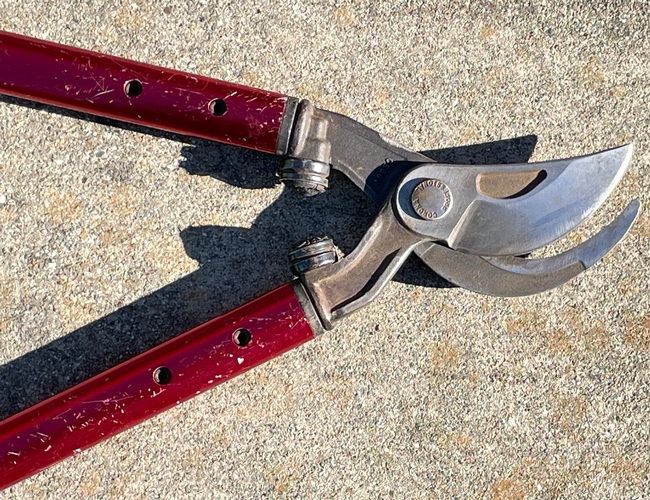
by Tom Hixson, UC Master Gardener of Napa County
Most Napa Valley residents recognize the plant known as tree of heaven when they see it sprouting wild in fields, taking over their gardens or defiantly establishing itself in sidewalk cracks. But despite its purported celestial provenance, this tree poses a significant threat to our landscapes and to agriculture.
Tree of heaven (Ailanthus altissima) is a medium-sized tree first exported from China to Europe in the mid-18th century and to the eastern United States in the 1780s. It was later introduced to California during the Gold Rush by Chinese miners who believed it had medicinal properties. But initial enthusiasm for the tree was based mostly on its ability to flourish virtually anywhere, regardless of drought, extreme heat or excess rainfall.
Because it grows so quickly (up to 90 feet) and can easily be pruned into a handsome tree, it promised to become an attractive addition to landscape plantings. Appreciation for this tree declined, however, once gardeners became aware of its invasive nature and its foul odor, sometimes described as akin to rotting peanut butter.
Despite these drawbacks, tree of heaven was used extensively as a street tree during much of the 19th century and achieved top billing in Betty Smith's 1943 novel A Tree Grows in Brooklyn. It has proliferated throughout the United States ever since.
In addition to having an unpleasant scent and aggressive growth habit, tree of heaven is the preferred host plant of several harmful insects, including the dreaded spotted lanternfly (Lycorma delicatula). This large plant hopper feeds on (and largely destroys) more than 100 different plant species, including grapes, stone fruits and hardwoods.
Currently, the spotted lanternfly has been identified in 18 states on the East Coast. It has the potential to spread rapidly, leaving severe damage in its wake. Tree of heaven is also the preferred host plant for another exotic and destructive pest, the brown marmorated stink bug, already found in much of California.
If you've ever gardened near an established tree of heaven, you will understand why its invasiveness is so concerning. It drops tens of thousands of its devilish seeds, which are carried in samaras, 1- to 2-inch pods cleverly engineered for maximum dispersal. On a windy day, the samaras scatter widely, then bed down for the winter under fallen leaves. In the spring, they are resurrected, sending vigorous new shoots to the surface.
Fortunately, at this early stage, the seedlings can be easily vanquished by pulling them up by the roots. If not eradicated in the first few months, however, the vigorous young plants will develop tenacious root systems and become more difficult to remove. The entire root system must be dug up or the plant will return in no time. It's easier to uproot when the soil is damp.
What can you do to limit the spread of tree of heaven? First, learn to identify it. Its crushed leaves emit a strong and disagreeable odor, and by late summer, it trademark seed pod clusters appear.
Besides germinating from seed, the mature tree can reproduce through runners. Seedlings from runners can appear up to 30 feet away from the parent tree and need to be dug up and removed. Regularly removing these runner shoots will eventually discourage new growth, but the gardener must remain vigilant. This tree never relaxes its efforts to spread.
The most important thing you can do to manage this tree (besides removing the adult altogether, which is not always feasible) is to remove the samaras when they drop in the fall. A simple vacuum attachment to a leaf blower does an excellent job of picking them up.
Don't put these seeds in a municipal compost bin. They will flourish elsewhere unless killed by rigorous hot composting. Instead, place them in a bag, seal it and send it to the landfill. It's worth the effort to collect the samaras in the fall as you'll greatly minimize sprouts the following spring.
California Master Gardeners are collaborating on a program to identify tree of heaven throughout the state with the goal of reducing its presence. Three hundred Master Gardeners have been trained to identify this tree and report its location, age and size. Researchers and public works officials use this data to generate maps and prioritize trees for removal, but it will take years for this massive undertaking to have an impact.
Given that awareness of the problem is a key part of managing it, we home gardeners can do our part by teaching ourselves to identify tree of heaven. Then we can utilize available techniques to control its spread in our own neighborhoods.
Library Talk: Join UC Master Gardeners of Napa County for a Napa Library talk on “Growing Peppers” on Thursday, January 2, from 7 pm to 8 pm via Zoom. Let's parlez peppers—hot, sweet and mild. Learn the basics of starting peppers from seed, plus growing tips and usage ideas for your eventual harvest. Click here to register!
Help Desk: The Master Gardener Help Desk is available to answer your garden questions on Mondays and Fridays from 10 am until 1 pm at the University of California Cooperative Extension Office, 1710 Soscol Avenue, Suite 4, Napa. Or send your questions to mastergardeners@countyofnapa.org. Include your name, address, phone number and a brief description
References:
https://ucanr.edu/blogs/blogcore/postdetail.cfm?postnum=60006 (tree of heaven removal)
https://ucanr.edu/blogs/blogcore/postdetail.cfm?postnum=59944 (scout and report info)
https://www.facebook.com/UCCEAmadorMG/photos/as-if-the-invasive-ailanthus-altissima-tree-of-heaven-infestation-throughout
https://ipm.cahnr.uconn.edu/invasive-species/invasive_plants_tree-of-heaven/#:~:text=Tree%2Dof%2Dheaven%20is%20not,(June%2Dearly%20July)
https://ipm.ucanr.edu/PMG/PESTNOTES/pn74142.html
https://en.wikipedia.org/wiki/Ailanthus




- Author: Penny Pawl, UC Master Gardener of Napa County
Did you know that 17 different types of bats live in Northern California? Some are pollinators; others are insect eaters. Both are important to our environment. Much has been written over the last few years about the loss of pollinators. Bats are an important pollinator. We rarely see them as most types usually fly at night. The insect-eating species consume many insects every night.
There are 154 species of bats in North America and half of those are at risk, from wind machines, people and diseases like white-nose syndrome. I know many of us remember vampire bats from the movies, but Count Dracula is a fictional being. Some South American bats do lick blood from animals, and of course we would all rather avoid those.
I'd like to share a few more facts about bats.
Fact: The saliva of some vampire bats contains a natural anticoagulant that has been isolated for medicinal use. Known as Draculin, it is used to treat stroke victims and others with blood- clotting issues.
Fact: Bats have evolved over eons from small ground animals to mammals capable of flight. If you look at the wing, you can see the outline of their old front hand or paw. It is amazing to see. Because bats fly, some people assume that they are birds. But birds do not give birth to live babies, nor do they carry their babies around on their chest.
Fact: Without bats there would be no tequila. The agave plant, the basis for tequila, is pollinated by three bats native to Mexico. So without bats, no margaritas. Raise a glass to the bats!
Fact: Not all bats live in groups. Some, like the hoary bat, live on their own.
Fact: In California, bats are protected by the Department of Fish and Wildlife. It is illegal to capture or kill them without a permit.
Fact: The beautiful bats pictured in some Facebook groups are almost all Asian fruit bats. They have the face of a little fox and are not found in North America. Once, in Thailand, I saw several hundred of these bats hanging from a huge tree shading a restaurant. They didn't bother anyone, and no one bothered them.
Fact: If you have driven across the Yolo Causeway in summer, you have driven over a large nesting area for bats. It is estimated that 250,000 bats nest under the causeway. They spend their days there and their nights roaming the fields. These are migratory bats, and during the winter they either hibernate or fly to warmer climates. Summer crops are grown in the causeway, and because the land often floods, it is very fertile.
Fact: Northern California Bats is an organization that cares for bats in distress. These bats are groomed, fed and cared for until they can fly again. How do you groom a bat? With a mascara brush! NorCal Bats members also give talks about the benefits of bats and conduct walks at the site near the Yolo Causeway.
Fact: Climate change is certain to cause habitat loss that will affect bats.
Fact: Bats carry many diseases, including rabies. If you see a bat in distress, call an expert.
Fact: If you want to put up a bat house, you should install it in the spring when bats are moving to their summer grounds.
Fact: You can buy bat guano on-line. It is a highly regarded fertilizer.
Bay Nature magazine had an excellent feature on bats in the Spring 2024 issue. In the same issue, you'll find another article about Archer Taylor Preserve, right here in Napa County.
Library Talk: Join UC Master Gardeners of Napa County for a talk on “How to Improve Water Retention in our Landscapes,” on Thursday, November 7, at 7 pm via Zoom. Learn some water catchment/retention approaches that you can use in your own yard to “Slow It, Spread It and Sink It.” Register to receive the Zoom link.
Help Desk: The Master Gardener Help Desk is available to answer your garden questions on Mondays and Fridays from 10 am until 1 pm at the University of California Cooperative Extension Office, 1710 Soscol Avenue, Suite 4, Napa. Or send your questions to mastergardeners@countyofnapa.org. Include your name, address, phone number and a brief description.
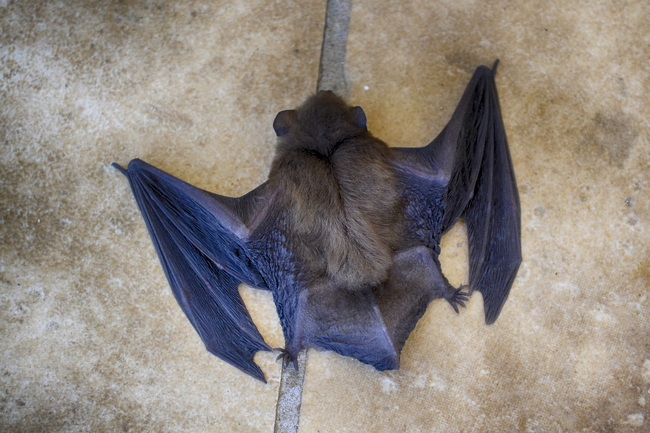
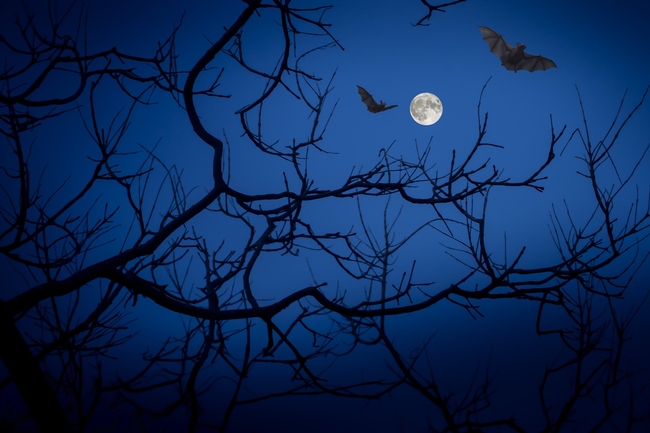

- Author: Bob Niklewicz PT, UC Master Gardener of Napa County
Okay, maybe I am cheap, but I hate to waste stuff. Even when I can buy something for a specific purpose, I try to make it first, just to see if it works--sort of like a Rube Goldberg machine.
I come from a family of immigrants, which is true of almost everyone in the U.S. Many of our ancestors came with little wealth but knew how to make do with what they had or how to repurpose things for their needs.
I still harbor some of those ancestral traits. Case in point: Since childhood I have stored all my paperwork in binders, whether for school or for work. Mom bought them for me initially, but later I had to work to get them.
I had dozens, if not hundreds of binders. They adorned bookcases and file cabinets and filled closets at work and at home. They held documents I may never have touched, but you never knew when you might need them. The yellowing paper was a clue to their age. A couple more years on the shelves and they might have qualified as “family heirlooms” at an estate sale. They were good binders packed with old information.
As a retiree, I needed space for my new stuff. The binders had to go. So, with conviction, I emptied several dozen binders and filled my recycling and composting bins. Out went years of knowledge printed on paper from repurposed trees. At least I get some points for recycling.
But I still have the binders, and I just can't bring myself to toss them out. (Maybe I am cheap.) Vinyl-covered binders with metal rings of different sizes attached to the cardboard. Should I separate them? Yes. So, I drilled out the rivets which was easier than trying to pull the things apart by hand. That also provided me with a hole to put a screw or a nail through when mounting the metal rings.
Now I have parts of binders all over the place. Which municipal collection bin to use? Idea: I will look at the tops of the cans to find the instructions. Vinyl covers black bin. Cardboard innards: brown or blue bin. Metal rings: blue bin. But gee whiz, those metal rings are in good shape, and they come in different sizes.
The binder deconstruction took time and energy. I'm not cheap so I must be frugal. Therefore, what kind of “garden hack” can I come up with to use those rings? Heading out to the yard, I cruised around for options. And look what I found:
My dahlia! The giant blossom overwhelmed the stem. If I do nothing, it will die with its head down. I grew it from a tuber. I was there when it started to bloom, and the punk butterflies and bees started to hang around. This will not do. I gotta do something!
Should I use plastic ties, plastic clips, string? Those are too easy; anyone would do that. Hey, I have binder rings! All I needed was a 4-foot stake to mount the rings. In my yard, that was not a problem. I placed the stake firmly into the soil and mounted the rings with a recycled screw.
In no time, the rings were mounted on the stake and the fabulous dahlia had a new lease on life, head held high and basking in the sun.
Could I have solved the problem faster and easier using plastic clips, tape, or string? Sure, but instead I spent a couple of hours saving a plant that I loved while problem-solving in the great tradition of Rube Goldberg.
So, am I cheap or frugal? Or just a retired old guy? Your call. I really did not think about it. I got the job done and felt good about it. And if you're young enough not to know who Rube Goldberg is, look him up, rookie.
Workshop: Join UC Master Gardeners of Napa County for a workshop on “Fall Garden Clean-up” on Saturday, October 26, at Las Flores Learning Garden, 4300 Linda Vista Avenue, Napa. Learn how we put the various garden plots to bed for the winter. There will be hands-on activities so you can learn how to implement these techniques in your own garden. Register here.
Library Talk: Join UC Master Gardeners of Napa County for a talk on “How to Improve Water Retention in our Landscapes,” on Thursday, November 7, at 7 pm via Zoom. Learn some water catchment/retention approaches that you can use in your own yard to “Slow It, Spread It and Sink It.” Register to receive the Zoom link.
Help Desk: The Master Gardener Help Desk is available to answer your garden questions on Mondays and Fridays from 10 am until 1 pm at the University of California Cooperative Extension Office, 1710 Soscol Avenue, Suite 4, Napa. Or send your questions to mastergardeners@countyofnapa.org. Include your name, address, phone number and a brief description.
All photos: Bob Niklewicz
